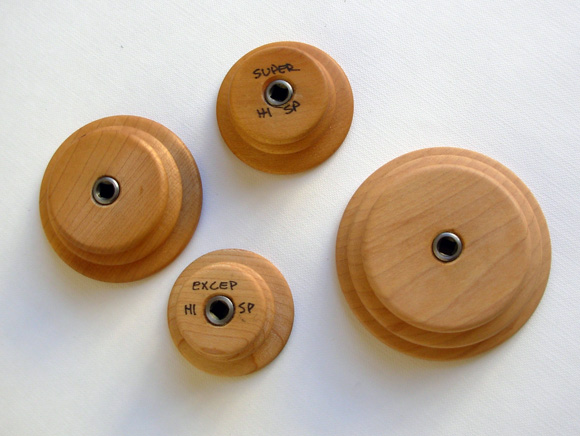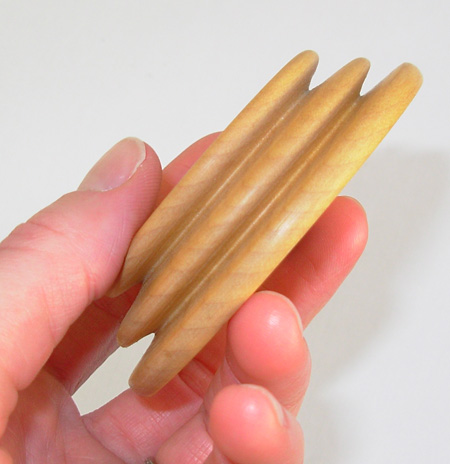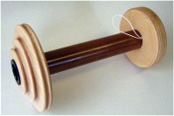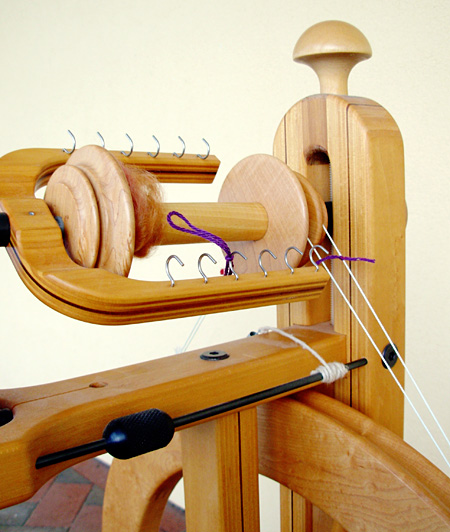
|
Ratio is one of those terms that is often bandied about in wheel advertisements and spinning articles and not so often defined. In essence: for every complete revolution of the drive wheel (that’s the big one), the flyer turns a certain number of times. That figure is the ratio, and it is expressed as X:1 (the flyer turns X times for a single revolution of the drive wheel); for example, 4:1 (the flyer turns four times for a single revolution of the drive wheel) or 18.5:1 (the flyer turns eighteen and a half times for a single revolution of the drive wheel). Occasionally, the numbers are flipped (for example, 1:4), but the number one always refers to the drive wheel.   Often, the whorl that determines the ratio is a separate piece [see above] with two grooves of slightly different diameter. Sometimes (as on most Louet wheels), the bobbin groove itself determines the ratio [see below, photo courtesy Louet]  The relationship between twists per inch and ratio depends on how much fiber is drafted for every full revolution of the drive wheel. Theoretically, if you drafted exactly an inch of fiber for every turn of the drive wheel, you would know that if you were using a whorl with a 15:1 ratio, you’d insert 15 twists in every inch of yarn. But few of us draft and treadle with such precision, so you’re looking at ball park estimates here.
Think: a lower ratio will
give you less twist per inch and a higher one will give you
more. In general, slow ratios would range from perhaps 4:1
to 8:1; medium from about 9:1 to 12:1; and fast from 13:1
and up, with anything above 20:1 being very fast.  Because the exact ratio depends on the style of wheel (single- or double-drive), some math is involved. For those interested in determining the ratio more precisely, a nice explanation is here. So, what ratio should you choose? If you are aiming for a thick and lofty yarn with a soft hand, choose something in the slower range. A plied yarn will use a medium or fast ratio to spin finer singles. Plying usually calls for a whorl that is slightly faster than the one used to spin the singles. Obviously, these are only general guidelines! Your personal drafting and treadling rhythms as well as your goals for the finished yarn will determine where you should start sampling. The best way to get familiar with your wheel’s range is to try all the different ratios with a variety of fibers and take good notes so you can reproduce the combinations that you are happy with. For inquiring minds with
the technical precision
of engineers, a very complete discussion of ratio can be
found in The
Alden Amos Big Book of Handspinning,
a dense tome, but one that,
if you work your way through, will give you the equivalent
of a master’s degree in Spinning
Theory. |
|||||
| ABOUT THE AUTHOR | |||||
 |
|||||
| Text & images © 2009 Lee Juvan. Contact Lee |
